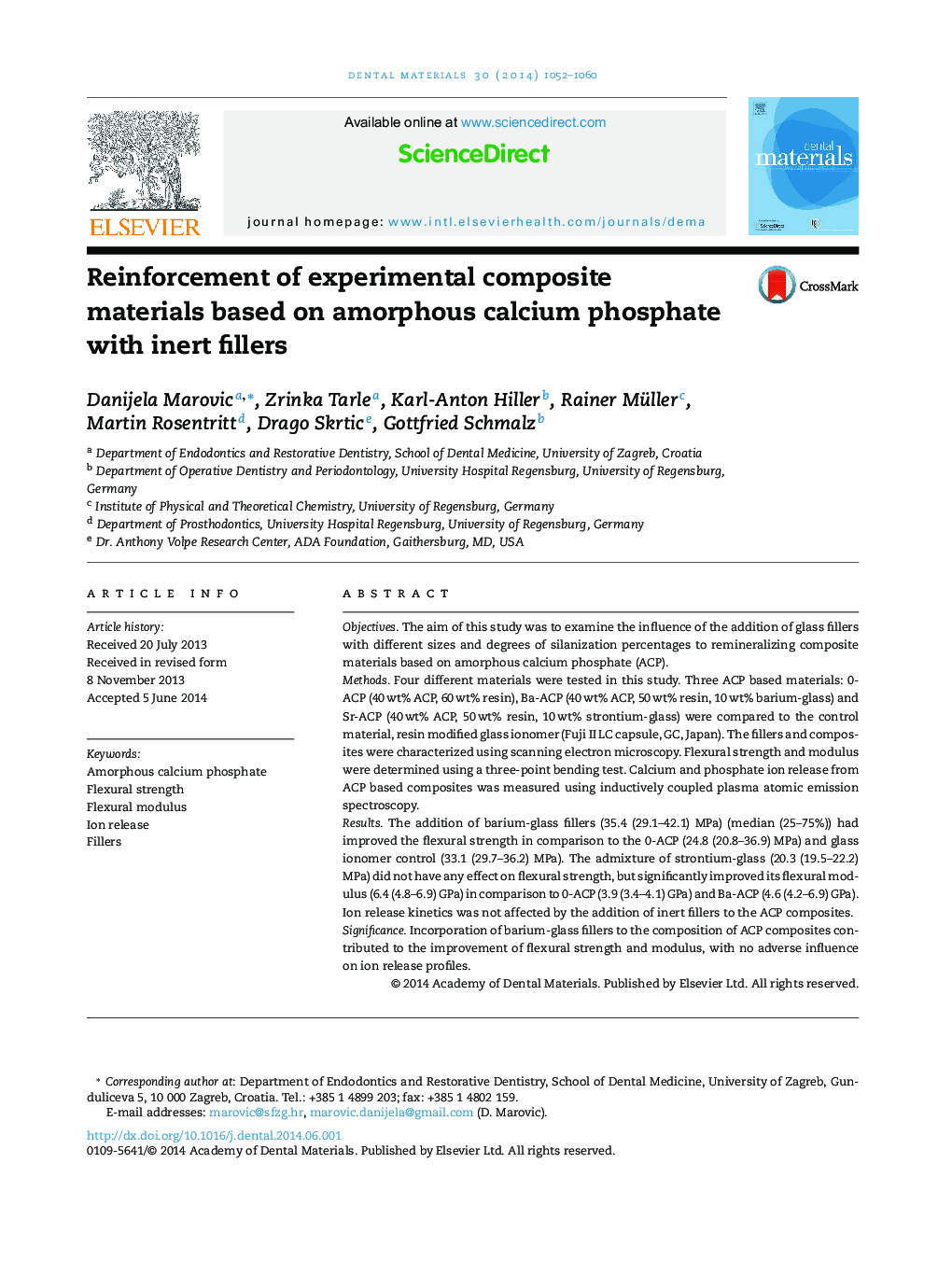| Article ID | Journal | Published Year | Pages | File Type |
|---|---|---|---|---|
| 1421103 | Dental Materials | 2014 | 9 Pages |
ObjectivesThe aim of this study was to examine the influence of the addition of glass fillers with different sizes and degrees of silanization percentages to remineralizing composite materials based on amorphous calcium phosphate (ACP).MethodsFour different materials were tested in this study. Three ACP based materials: 0-ACP (40 wt% ACP, 60 wt% resin), Ba-ACP (40 wt% ACP, 50 wt% resin, 10 wt% barium-glass) and Sr-ACP (40 wt% ACP, 50 wt% resin, 10 wt% strontium-glass) were compared to the control material, resin modified glass ionomer (Fuji II LC capsule, GC, Japan). The fillers and composites were characterized using scanning electron microscopy. Flexural strength and modulus were determined using a three-point bending test. Calcium and phosphate ion release from ACP based composites was measured using inductively coupled plasma atomic emission spectroscopy.ResultsThe addition of barium-glass fillers (35.4 (29.1–42.1) MPa) (median (25–75%)) had improved the flexural strength in comparison to the 0-ACP (24.8 (20.8–36.9) MPa) and glass ionomer control (33.1 (29.7–36.2) MPa). The admixture of strontium-glass (20.3 (19.5–22.2) MPa) did not have any effect on flexural strength, but significantly improved its flexural modulus (6.4 (4.8–6.9) GPa) in comparison to 0-ACP (3.9 (3.4–4.1) GPa) and Ba-ACP (4.6 (4.2–6.9) GPa). Ion release kinetics was not affected by the addition of inert fillers to the ACP composites.SignificanceIncorporation of barium-glass fillers to the composition of ACP composites contributed to the improvement of flexural strength and modulus, with no adverse influence on ion release profiles.
